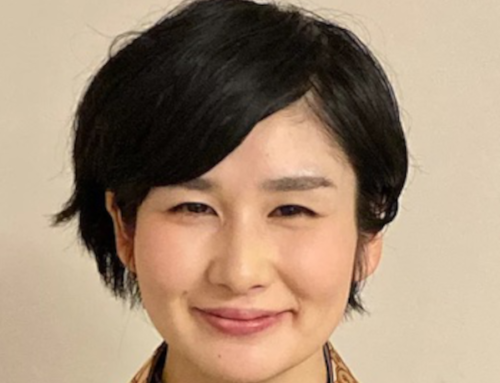Many years ago oshoko was commonly translated “incense offering”. We used “offering” in many of our practices to describe an action before the Buddha. When we used to observe our Hanamatsuri service in the Annex, students would bring flowers, omanju, candles and incense offerings to be placed before Amida Buddha. When we return to in-person services we will be able to once again observe these rituals. It will be wonderful to be together in the Annex. Dharma School students preparing to carry out their responsibilities. Trying to be quiet. Teachers guiding young students. Older students helping where they can. Maybe this is the offering before the Buddha; the caring interaction of people.
When we make an offering what are we doing? There are at least three participants. Me, what is being offered and that which the offering is being made to. Incense offering would be me, the incense and Buddha. I can, even with some reservation, determine that the incense and I are present but what about Buddha. Is the Buddha present where the offering is made? I think we can say that the image of Buddha represents Buddha that is everywhere. Infinite wisdom and infinite compassion that permeates everywhere. Shinran makes this reference at the beginning of the Shoshinge, “Kimyo muryoju nyorai, Namo fukashige ko” “I take refuge in the Buddha of immeasurable life and unfathomable light”. If the Buddha is immeasurable and unfathomable then Buddha is everywhere. If Buddha is everywhere then why offer in a specific location. Maybe there is another way to understand our behavior.
I once asked a Jodo Shinshu teacher if there was anyone that did not benefit from Amida’s Vow. Was there anyone outside Amida’s enlightenment. He replied that there was no one outside of Amida’s wisdom and compassion. Wherever I am there is Amida. No matter what I do there is Amida. This causes concern because we understand what we are capable of. Amida does not change, I am changed by acknowledging my imperfections and limitations and the absolute assurance of Amida that results in my enlightenment.
Buddha is not located in any particular place but when we prepare a place, whether as elaborate as our Onaijin or as simple as Gassho, we prepare ourselves to hear the dharma. One way to understand our rituals of oshoko and osonae, the placing of articles in the onaijin, is as a practice of preparing ourselves and a place to hear the dharma.




